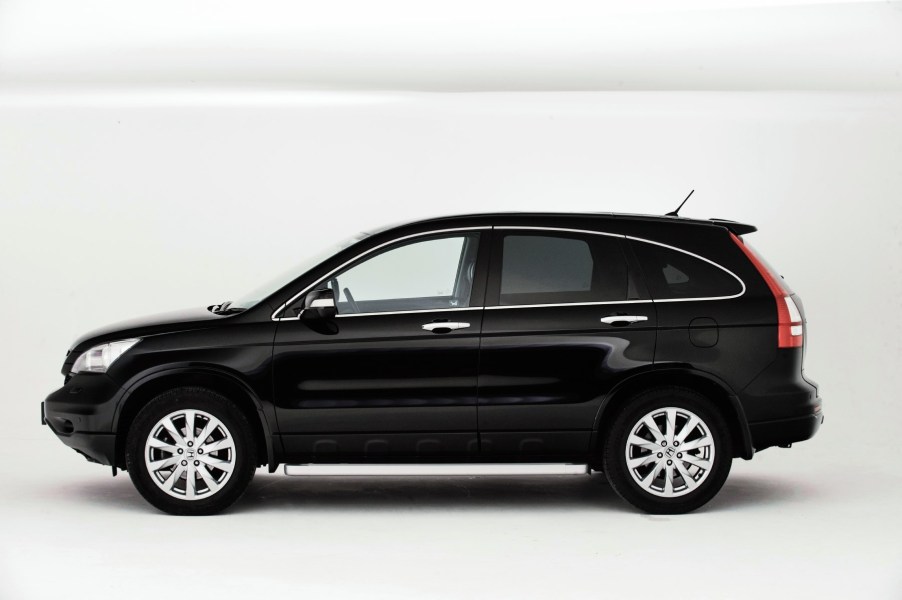
Honda CR-V Rust Recall Shows the Damage Road Salt Can Cause
It’s called the rust belt for a reason. Honda has issued a new recall for older CR-V crossovers related to excessive rust in wintry U.S. states. The brand is urging more than 500,000 CR-V owners to schedule rust inspections.
Road salt is wreaking havoc on rust-prone CR-Vs

Honda has recalled approximately 564,000 CR-Vs from model years 2007-2011 for an excessive rust risk that’s explicitly linked to road salt use in northern and midwestern states. According to the Associated Press (AP), road salt use during winter can lead to extreme rusting on the frames and rear suspension components of older CR-Vs. This rust can loosen suspension parts and cause instability. The risk poses enough safety hazards for Honda to issue a recall 16 years after some CR-Vs hit the road.
It’s a significant investment on Honda’s part. Millions of cars endure winter-related rust throughout the rust belt every year without recalls or repairs available from OEMs. The fact that Honda has offered an extensive recall shows the severity of the problem in these models. And it all goes back to the widespread use of salt treatments to help melt snow and ice.
Does road salt actually cause vehicle rust?
Indeed, road salt causes rust on cars, trucks, and SUVs by boosting the chemical reactivity of water with steel and iron.
All vehicles eventually experience rust, even ones that reside in deserts. These metals are extremely reactive to moisture – even in extremely dry climates. Naturally, wetter environments pose an even greater risk of rust. There’s simply more moisture. Adding road salt to the mix accelerates the process even more.
As the salt dissolves into water, it adds free-floating ions that love to chemically react with iron and steel. The result? Rust spreads on cars like weeds in an unkempt garden.
That’s exactly what has happened to Honda CR-Vs throughout the northern half of the U.S. Excessive road salt usage has helped keep roads safer during winter weather. But the practice has decayed millions of vehicles like the Honda CR-V.
The best ways to combat salt-induced vehicle rust are to apply undercoating before each winter and rigorously wash your vehicle as often as possible throughout the cold months. Or, you can wait for the rare OEM rust recall. But don’t hold your breath for that outcome.
Which states are in the CR-V rust recall?

According to AP, 2007-2011 CR-Vs from 22 states and the District of Columbia have been recalled. These are the specific regions that commonly use road salt to combat winter conditions.
- Connecticut
- Delaware
- Illinois
- Indiana
- Iowa
- Kentucky
- Maine
- Maryland
- Massachusetts
- Michigan
- Missouri
- New Hampshire
- New Jersey
- New York
- Ohio
- Pennsylvania
- Rhode Island
- Vermont
- Virginia
- West Virginia
- Wisconsin
- Washington, D.C.
How to find if your CR-V is affected by the Honda rust recall
If you’re unsure whether your CR-V is included in the rust recall, check the Honda and National Highway Traffic Administration (NHTSA) websites. You can always search by Vehicle Identification Number (VIN) with the OEM or NHTSA to see all the Honda recalls under which your vehicle falls.


